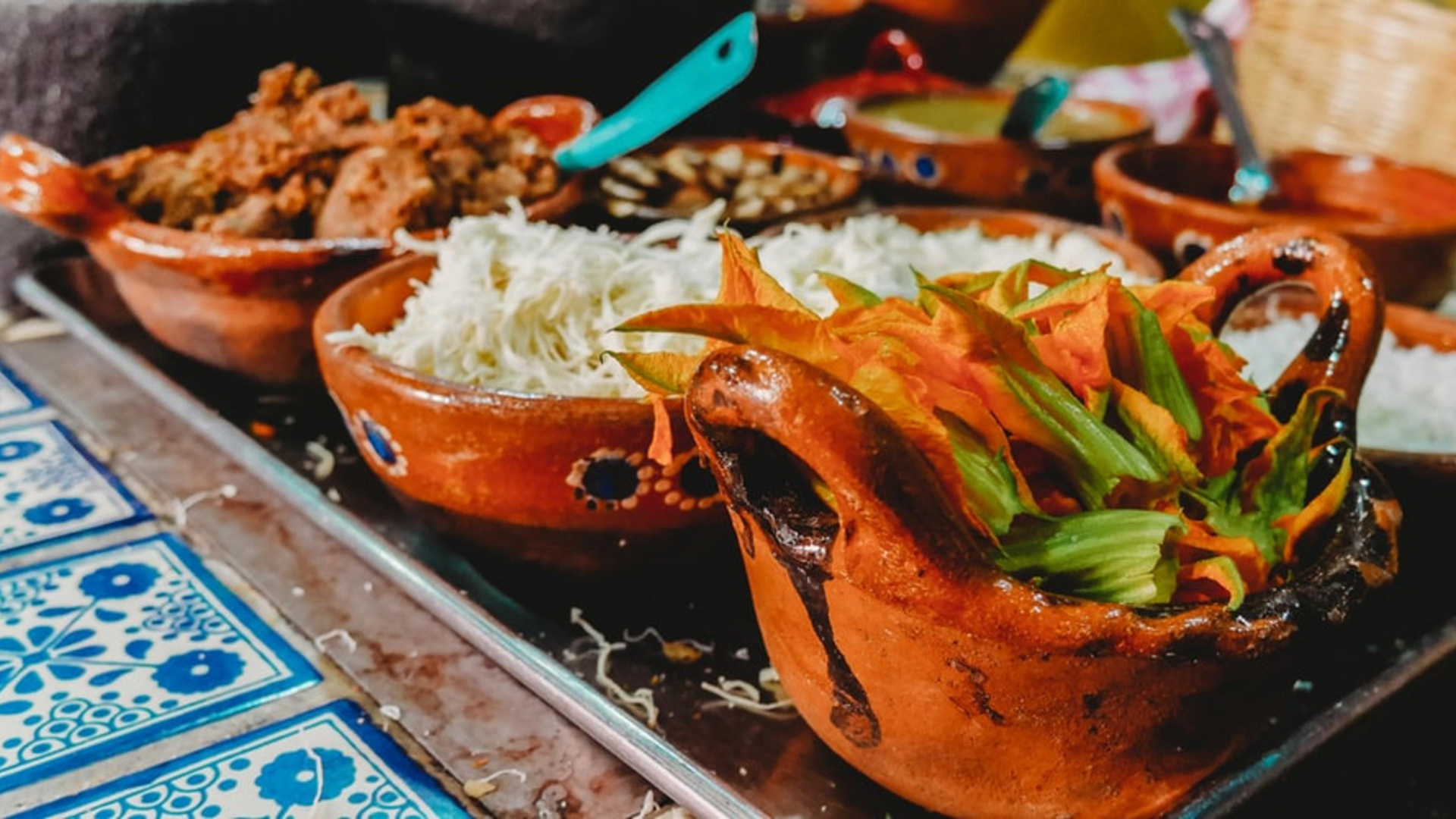Headed to Oaxaca…
Your taste buds are in for a treat as this city is a hot spot for mole, pozole, and more. Seven distinct types of Oaxacan mole and three types of pozoli will keep you salivating and satisfied the entire time.
Moles
Moles are a traditional marinade, and sauce used in Mexican cuisine. The name comes from the indigenous Nahuatl word molli, and moles can have over thirty ingredients.

The recipes for mole vary from family to family and are often a well-kept secret passed down through generations. The mole-making process begins in the market, shopping for fresh ingredients which differ based on the various regions of the country and what is available.
For traditional mole, basic ingredients include a combination of chilies, sesame seeds, tomatillos, spices, dried fruits, nuts, and chocolate. A simple type of mole may use at least three to four types of chilies such as ancho, pasillo, mulato, chilhuacle, or chipotle.
Moles are typically served over a variety of meats such as turkey, pork, chicken, or lamb and can be drizzled over tamales, tacos, enchiladas, burritos, stuffed peppers, and more. Take your pick of the moles—negro, rojo, coloradito, amarillo, manchamantel, chichilo, verde, or whatever is on the menu. My favorite was the mole Verde made with pumpkin seeds and a green sauce spread over chicken or pork and almost always served with white rice. Here are some basics about the seven Oaxacan Moles and the chilies important to each.
Mole Negro
An elaborate and time intensive mole that uses Chilhuacle Negro, Chilhuacle Rojo, Chili Mulato, and Pasilla Oaxaqueño. Chocolate and chilis are the signature ingredients for mole Negro.
Mole Rojo
The spiciest of the moles, chili ancho, chili guajillo, and sesame seeds are the primary ingredients in mole rojo.
Mole Coloradito

The sweetest of the moles, due to bananas, raisins, cinnamon, and chocolate, it is combined with ancho and chilcostle chilies to make this a favorite for serving over enchiladas.
Mole Chichilo
This hard-to-find mole, due to the difficulty in sourcing the prized chilhuacle negro chile, is the least sweet of the moles.
Mole Manchamantal
This sharp-tasting chili ancho is lathered over chicken and often garnished with fresh pineapple or sweet plantains to balance the strength of the chili.
Mole Amarillo

The yellow chilhuacle and chili guajillo provide the yellow/brown color for this mole that’s frequently served by food vendors over chicken and corn tortillas, garnished with cilantro or olives.
Mole Verde
This is the only mole that does not use dried chilis. Its main ingredient is pumpkin seeds.
But if you find mole is not your thing, definitely give the pozole try.
Pozole

Hominy is the primary ingredient in pozoli, a traditional Mexican soup or stew. Hominy is made from shelled, dried corn that is soaked in water and lime.
The chewy texture vaguely resembles the flavor of a corn tortilla. Traditional ingredients of pozoli are hominy, pork or chicken, and garlic. Pozole is garnished with chilies, salsas, onions, avocados, lettuce, radishes, lime, or cabbage.
The three primary types of pozoli in this region are rojo which uses guajillo, ancho, or piquin chilies; verde made from tomatillos, cilantro, and sometimes jalapenos, or blanco, made with hominy, pork or chicken and garlic.
You will most certainly find your favorite of the moles and pozoles as you indulge in delightful meals savoring these traditional delicacies. Oh, and don’t forget the mezcal. Are you hungry yet? Buen provecho!
by: Gwen Hyatt


